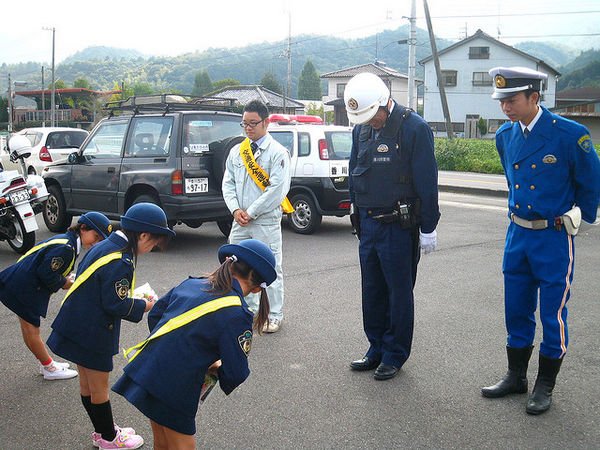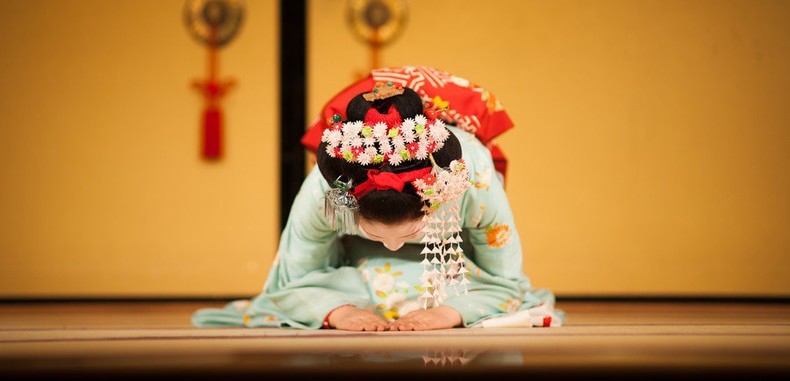Keigo (敬語) is the essence of respectful communication in Japan, reflecting the complexity and beauty of the Japanese language. More than just a simple set of rules, keigo is an expression of social hierarchy and mutual respect, elements deeply rooted in Japanese culture.
There are three main levels of keigo that correspond to the nuances of formality: "Teineigo" (丁寧語), which is the basic level of politeness; "Sonkeigo" (尊敬語), used to express respect; and "Kenjougo" (謙譲語), which is used for humility. Each category has its own grammatical structures and specific vocabulary, allowing speakers to navigate accurately through various social situations.
These levels of formality are not just a courtesy, but a vital part of daily communication, reflecting the position and relationship between people. The correct use of keigo can open doors and build bridges in social and professional interactions, while incorrect use can cause misunderstandings or even offenses. In this article, we will delve deep into keigo, unraveling its secrets and demonstrating how it shapes communication and relationships in Japan.
Table of Content
The Simple and Informal Form in Japanese
Before delving into the complex levels of keigo, it is essential to understand the simple and informal form of Japanese, often used in more intimate contexts. Known as the dictionary form or "Taiyōkei (体言形)," this linguistic approach is characterized by presenting words in their basic form, without the polite conjugations that accompany keigo.
This way of speaking is reserved for situations where intimacy and mutual comfort prevail, such as between family members and close friends. It is an uncomplicated and direct style, reflecting a level of closeness that dispenses with formalities. For example, the verb "eat" in dictionary form is たべる (taberu), while its polite form is たべます (tabemasu).
You can use verbs in the dictionary form with familiar people and verbs in the polite form with unfamiliar ones. Of course, the use may vary depending on the situation or way of expressing. This is not an absolute rule.

丁寧語 - Teineigo - Polite
The Teineigo, or polite language, is the most commonly used keigo form and is considered the standard of formality in the Japanese language. This level of keigo is used to demonstrate courtesy and respect to people, especially when they hold a higher social position than ours. It is the appropriate choice when addressing strangers, superiors, elderly, or simply when expressing respect in any social context.
The grammatical structures "masu" and "desu" are striking characteristics of Teineigo. They transform communication into something more polite and formal, suitable for a wide range of situations, from casual conversations to professional interactions. For example, the verb "eat" in basic form is たべる (taberu), but in Teineigo, it becomes 食べます (tabemasu), reflecting a level of politeness appropriate for most daily interactions.
In addition to being the form taught to foreigners learning Japanese, Teineigo is widely used in formal communication channels, such as newspapers and news programs, due to its clarity and respectability. Mastery of Teineigo is essential for anyone wishing to communicate effectively in Japan, as it establishes a tone of respect and professionalism.

尊敬語 - Sonkeigo - Respeitoso
The Sonkeigo, known as respectful or honorific language, is a level of keigo used to express maximum reverence and respect for individuals who occupy high positions in the social hierarchy, such as superiors and clients. It is a form of language that elevates the person being referred to, almost to a level of veneration.
This form of keigo is a constant presence in customer service in shops, markets, pharmacies, and other commercial establishments. A familiar example is the greeting いらっしゃいませ (irasshaimase), often heard by customers when they enter a business, conveying a warm welcome and respect.
Sonkeigo is used to honor and exalt the person mentioned, and it is crucial to understand that it should never be used to refer to oneself or one's own actions, as this would be considered arrogant and inappropriate. For example, the verb "eat" in the honorific form is not simply the polite version, but becomes 召しあがる (meshi agaru), conferring a high level of respect to the action.

謙譲語 - Kenjougo - Humilde
The Honorific Language, often referred to as the Humility Form, is a crucial aspect of keigo that reflects modesty and respect in Japanese culture. This level of formality is typically employed by individuals when addressing someone they consider superior or worthy of great respect. A classic example of this expression of humility is the phrase よろしくお願いします (yoroshiku onegai shimasu), which can be translated as "please be kind" or "nice to meet you," depending on the context.
The use of Kenjougo is a way to position oneself in a submissive role in relation to the interlocutor, diminishing oneself to elevate the other. It is common in situations where the speaker wishes to show deference or when their actions are intended to benefit or serve the person they are speaking to. That's why it is a form of keigo frequently heard from merchants and attendants, who use it to demonstrate their willingness to serve the customers.
For example, the verb "eat" in the humble form is not simply たべる (taberu), but turns into 頂く(itadaku), indicating that the act of eating is performed with gratitude and respect, especially when you receive something from someone.

Mastering Verbs in Keigo.
Learning Japanese can be a challenge, especially when it comes to mastering verbs in their multiple forms of politeness. Four different forms for a single verb may seem intimidating at first. However, with time and immersion in Japanese life, the use of "Keigo" becomes second nature, even for natives who occasionally also encounter difficulties.
To study these variations is essential to not get lost in readings or dialogues. To facilitate your linguistic journey, I have prepared a list of essential verbs in keigo. Memorize them and you will be on the right path to communicate with confidence and respect in Japan.
| Taiyōkei | Teineigo | Sonkeigo | Kenjōgo |
|---|---|---|---|
| 見る miru | 見ます mimasu | ご覧になる go-ran ni naru | 拝見する suru Haiken |
| 会う au | 会います aimasu | .お会いになる o-ai ni naru | お目にかかる o-me ou Kakaru |
| ある aru | ござる gozaru | ||
| いる iru | おるoru | いらっしゃる irassharu おいでになる o-ide ni naru | おる oru |
| 来る kuru 行く Iku | 参る Mairu | 伺う ukagau 参る Mairu | |
| 知る shiru | 存じている Zonjite iru | ご存じ go-zonji | 存じあげる zonji ageru |
| 食べる taberu 飲む nomu | 頂く itadaku | 召しあがる meshi-agaru | 頂く tadaku |
| もらう Morau | もらいます moraimasu | 頂く itadaku 頂戴する Chodai-suru | |
| やる yaru あげる ageru | あげます agemasu | 差しあげる sashiageru | |
| くれる kureru | くれます kuremasu | くださる Kudasaru | |
| する suru | します shimasu | なさる nasaru | 致す itasu |
| 言う iu | 言います iimasu | おっしゃる ossharu | 申し上げる Moshi-ageru 申す Mosu |
| 着る kiru | 着ます kimasu | お召しになる omeshi ni naru | |
| 寝る neru | 休みます Yasumimasu | お休みになる O yasumi ni naru | |
| 死ぬ Shinu | 亡くなる Nakunaru | お亡くなりになる O nakunari ni naru |
Finally, let's look at some examples and phrases using Keigo.
The first example shows the sentence "これは本です" in different levels of formality.
| Taiyōkei | Teineigo | Sonkeigo | Kenjōgo |
|---|---|---|---|
| これは本だ kore wa hon da. | これは本ですkore wa hon desu. | これは本である kore wa hon de aru. | これは本でございます kore wa hon de gozaimasu. |
The second example shows the way to make "requests or commands". There are various different levels of formality for some occasions, let's show the famous phrase to interact and ask for a favor or friendship.
- よろしく 頼む - yoroshiku tanomu
- よろしく 頼みます- yoroshiku tanomimasu
- よろしく お願い します - yoroshiku onegai shimasu
- よろしく お願い 致します。 - yoroshiku onegai itashimasu
- よろしく お願い 申し上げます。- yoroshiku onegai mōshiagemasu
Of course, there are many other things not mentioned in this article that are related to keigo, such as honorific titles or Japanese suffixes. We recommend reading: Japanese Honorifics – The Meaning of san, kun, chan and others
